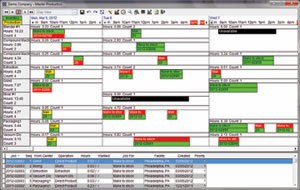The benefits of updating your job scheduling software
As IT environments continue to increase in complexity, an effective job scheduling solution is a growing necessity. While many IT administrators will likely already be utilizing job scheduling software, technological advancements have created a prime opportunity to update existing solutions. In fact, job scheduling vendors make regular tweaks to their software, so newer versions often come with higher performance.
There are many benefits that IT departments and businesses can hope to gain from updating their job scheduling software solutions, including improved performance and better integration with other modern software and platforms. With optimal job scheduling, organizations can expect to see efficiency gains that are visible across the business. Additionally, many job schedulers enable various degrees of workload automation to be implemented, which can free up valuable resources and open the door for IT staff to pursue more innovative projects.
What to look for with job scheduling solutions
In a recent TechTarget article, contributor Stephen Bigelow explored how modern IT environments have changed and offered a few criteria to consider when selecting an optimal system management tool.
“IT professionals can no longer rely on traditional physical servers and provisioning to manage enterprise computing,” Bigelow wrote. “Today, server virtualization and other technologies abstract workloads from underlying systems; mission-critical applications may reside on almost any server at any location, connected through a network that is also virtualized to manage traffic flows and data. IT professionals need powerful tools to manage such systems.”
When updating a job scheduling software solution, there are a wide variety of things that should be kept in mind. Bigelow suggested reevaluating the features that could be helpful for the specific business to possess. Such features include schedulers with hardware discovery capabilities as well as those that provide users with information about configuration and inventory so that administrators can oversee details like equipment temperature and fan status. Other useful features might include notification systems that can alert admins when a potentially problematic situation is developing, so that jobstreams can be tweaked and businesses can continue as usual without any unplanned disruptions.
Bigelow detailed a few other features that could be beneficial to obtain, including software management of hypervisors, applications and operating systems. These job schedulers can incorporate functionality that allow managers visibility into which software and which versions are in use so that patching systems becomes significantly easier. This is good to keep in mind as security is one area in particular that is constantly changing as the threat landscape becomes more sophisticated and harder to navigate. With a job scheduler tool that includes security features through the use of configurable policies, a solution can be tailored to evolve alongside both the business and the threat environment. Furthermore, with automation at hand, patching any vulnerabilities can become more streamlined, which can actually reduce the complexity of an IT environment overall.
“A tool with all your must-have features has to also work across the entire spectrum of hardware currently or potentially deployed in your data center,” Bigelow wrote. “For example, if you’re depending on a tool to provide system inventory data, the tool will be useless if it only inventories certain systems and not others.”
Content Copyrighted To TechnoWorldNews.com
Latest posts by Techno World News (see all)
- Elevating Security Paradigms in Marketing: A Holistic Expedition - November 22, 2023
- Why CMMS Is Becoming A Critical Component In The Manufacturing Industry - August 7, 2023
- How Safety Standards for Autonomous Vehicles will Help Reduce Serious Car Accidents - July 29, 2023







